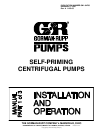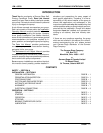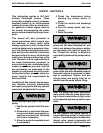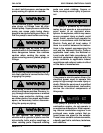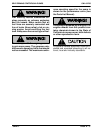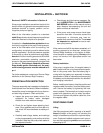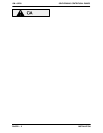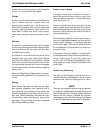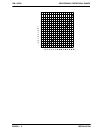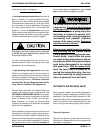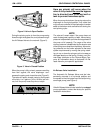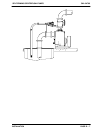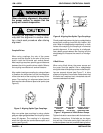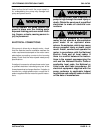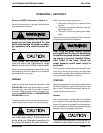
SELF-PRIMING CENTRIFUGAL PUMPS
OM--04760
PAGE A -- 1SAFETY
SAFETY - SECTION A
This information applies to G-R Self-
Priming Centrifugal pumps. These
pumps are available as basic, pedestal-
mounted models or as close-coupled
models driven by either an electric mo-
tor, gasoline or diesel engine. Refer to
the manual accompanying the power
source be fore attempti ng to begin oper-
ation.
This manual will alert personnel to
known procedures which require spe-
cial attention, to those which could
damage equipment, and to those which
could be dange rous to personnel. How-
ever, this manual cannot possibly antici-
pate and provide detailed instructions
and precautions for every situation that
might occur during maintenance of the
unit. Therefore, it is the responsibility of
the owner/maintenance personnel to
ensure that only safe, established main-
tenance procedures are used, and that
any procedures not addressed in this
manual are performed only after estab-
lishing that neither personal safety nor
pump integrity are compromised by
such practices.
In addition to this manual, see the sepa-
rate literature covering mainte nance
and repair, p ump parts, and any optional
equipment shipped with the pump.
Before attempting to open or service the
pump:
1. Familiarize yourself with this man-
ual.
2. Disconnect or shut down the pow-
er source and take necessary pre-
cautions to ensure that the pump
will remain inoperative.
3. Allow the pump to completely cool
if overheated.
4. Check the temperature before
opening any covers, plates, or
plugs.
5. Close the suction and discharge
valves.
6. Vent the pump slowly and cau-
tiously.
7. Drain the pump.
Do not attempt to pump any liquids the
pump has not been designed for, and
which may damage the pump or endan-
ger personnel as a result of pump fail-
ure. Consult the factory to determine
compatibility between the pump and liq-
uid.
Use lifting and moving equipment in
good repair and with adequate capacity
to prevent injuries to personnel or dam -
age to equipment. Suction and di s-
charge hoses and piping must be re -
moved from the pump before lifting.
After the pump has been positioned,
make certain that the pump and all pip-
ing or hose connections are tight, prop-
erly supported and secure before oper-
ation.
Do not operate the pump agai nst a
closed discharge valve for long periods
oftime.Ifoperatedagainstacloseddis-
charge valve, pump components will
deteriorate, and the liquid could come



